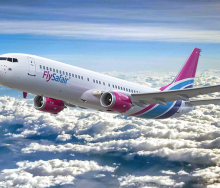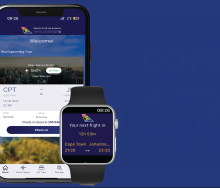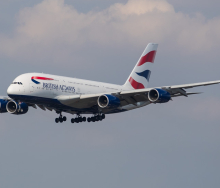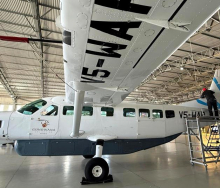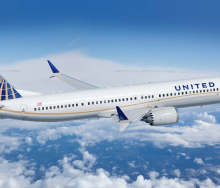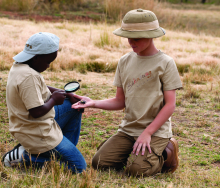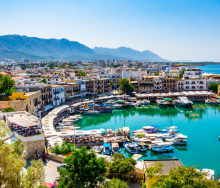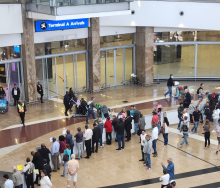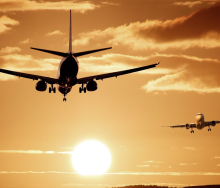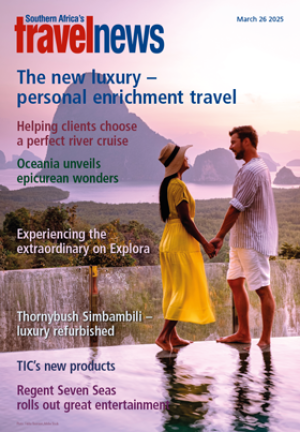FOR over 500 years the
only way to get to St
Helena was by ship.
Yet this remote,
extraordinarily scenic and
historic tropical island in the
Atlantic has been of such
strategic importance that at
one time a thousand ships
would call there in a year
when it played a key role in
expanding Britain’s global
trade.
Last weekend that changed
when Airlink started a weekly
service using the new airport
carved out of the side of the
island by SA construction
company, Basil Read.
Islanders watched from
the surrounding mountains
and wept in the new airport
building as the Airlink flight
touched down and ushered in
a new era.
Until now a five-day voyage
on the RMS St Helena from
Cape Town was the quickest
way to visit the island and,
as the ship carried on to
Ascension Island, it was 18
days before one could be back
in Cape Town.
Using one of its new Embraer
E190 jets, Airlink’s flight from
Windhoek is under four hours.
The aircraft starts the flight in
Johannesburg and refuels in
Windhoek, at the same time
collecting passengers from a
synchronised flight from
Cape Town.
One of the first places
where slavery was prohibited,
St Helena became the naval
centre for British efforts to
wipe out slavery, rescuing
some 25 000 slaves. After the
Battle of Waterloo, Napoleon
was imprisoned and died
there. Some six thousand Boer
prisoners of war were sent
there and so too was Zulu
King Dinuzulu kaCetshwayo,
imprisoned for 10 years in
1890 for leading a rebellion
against the British. Later,
25 Zulu chiefs were exiled to
the island for resisting the
British poll tax in Natal.
Rich in history and old world
charm, the island offers a
variety of activities on land and
sea. Example: In warm
tropical waters of up to
26 degrees in January to
March, it is probable rather
than possible for snorkellers
to swim with whale sharks.
With the inauguration of
a scheduled air service,
the government of St
Helena is very active in
stimulating the development
of tourism.
The first fruits of the new
infrastructure include the
Mantis group opening a
new hotel on a prime site in
Jamestown.
Mantis founder, Adrian
Gardiner, told TNW he had
been in negotiations with
St Helena authorities
since the idea of the
airport was originally
mooted ten years ago.
As a result, he was given
first choice when the
government identified a
number of possible sites.
The Mantis 30-room hotel
increases the number of
rooms on the island by
over 50%.
Look out for TNW’s special
feature on St Helena in a
forthcoming issue.
